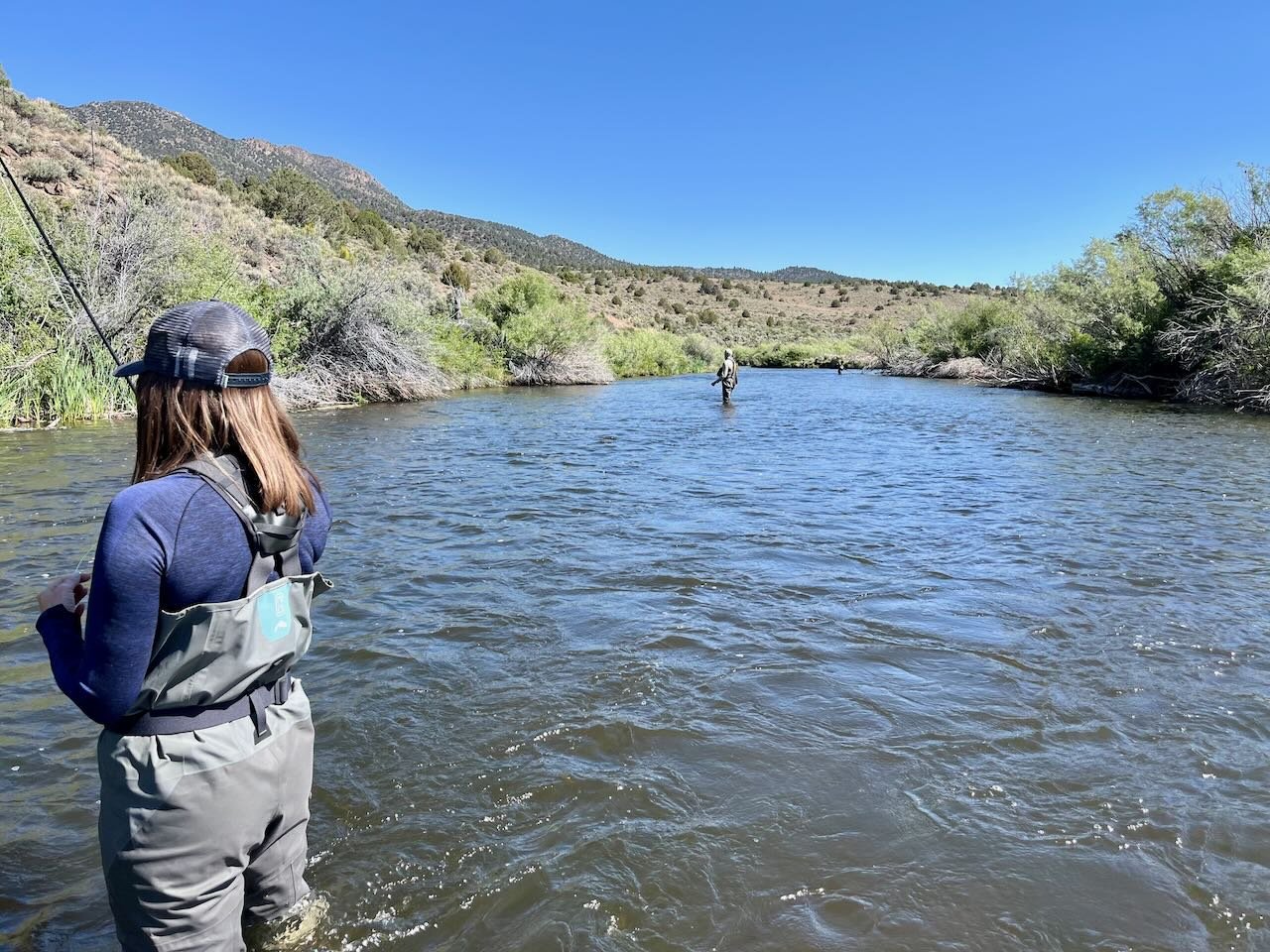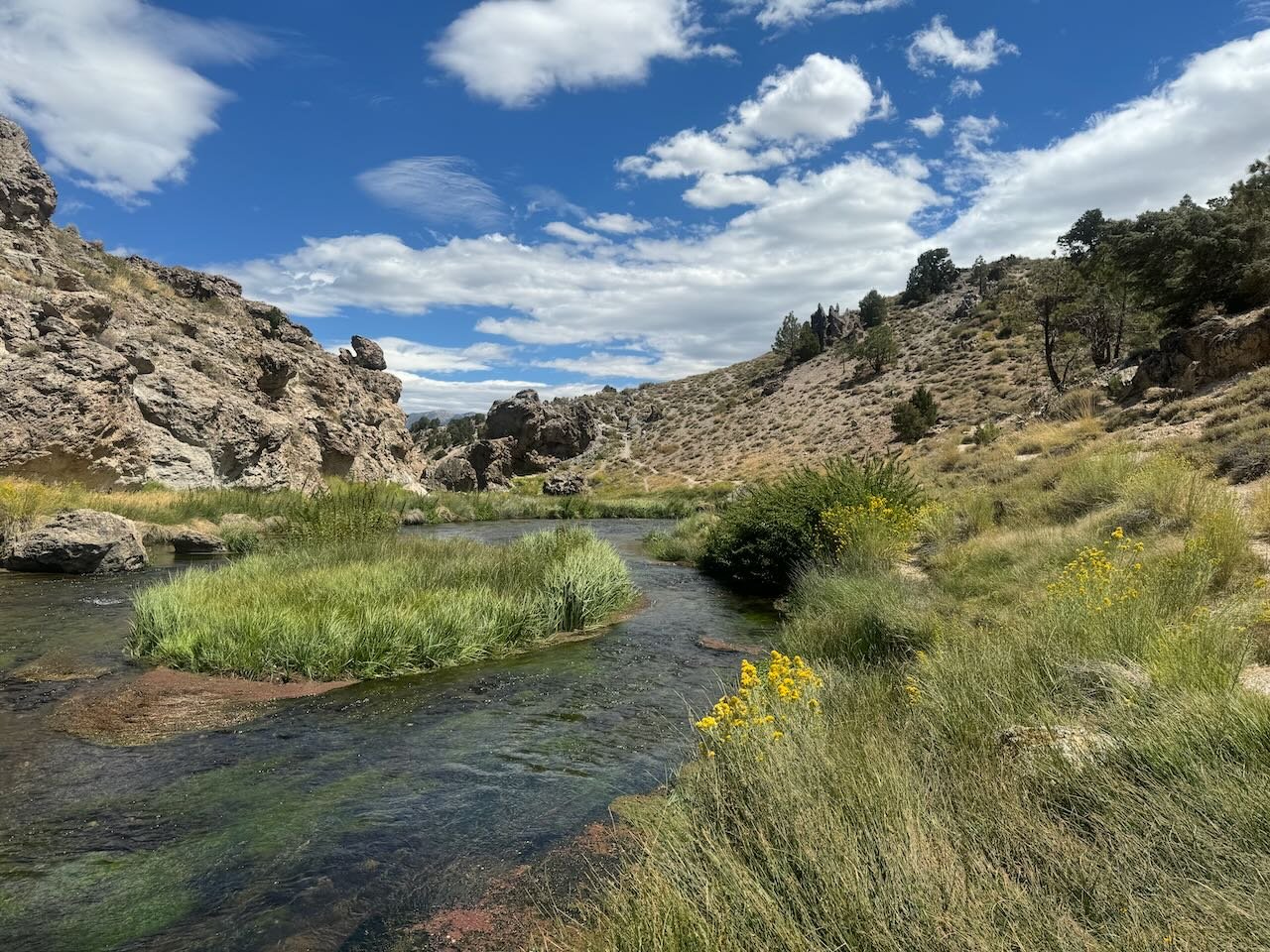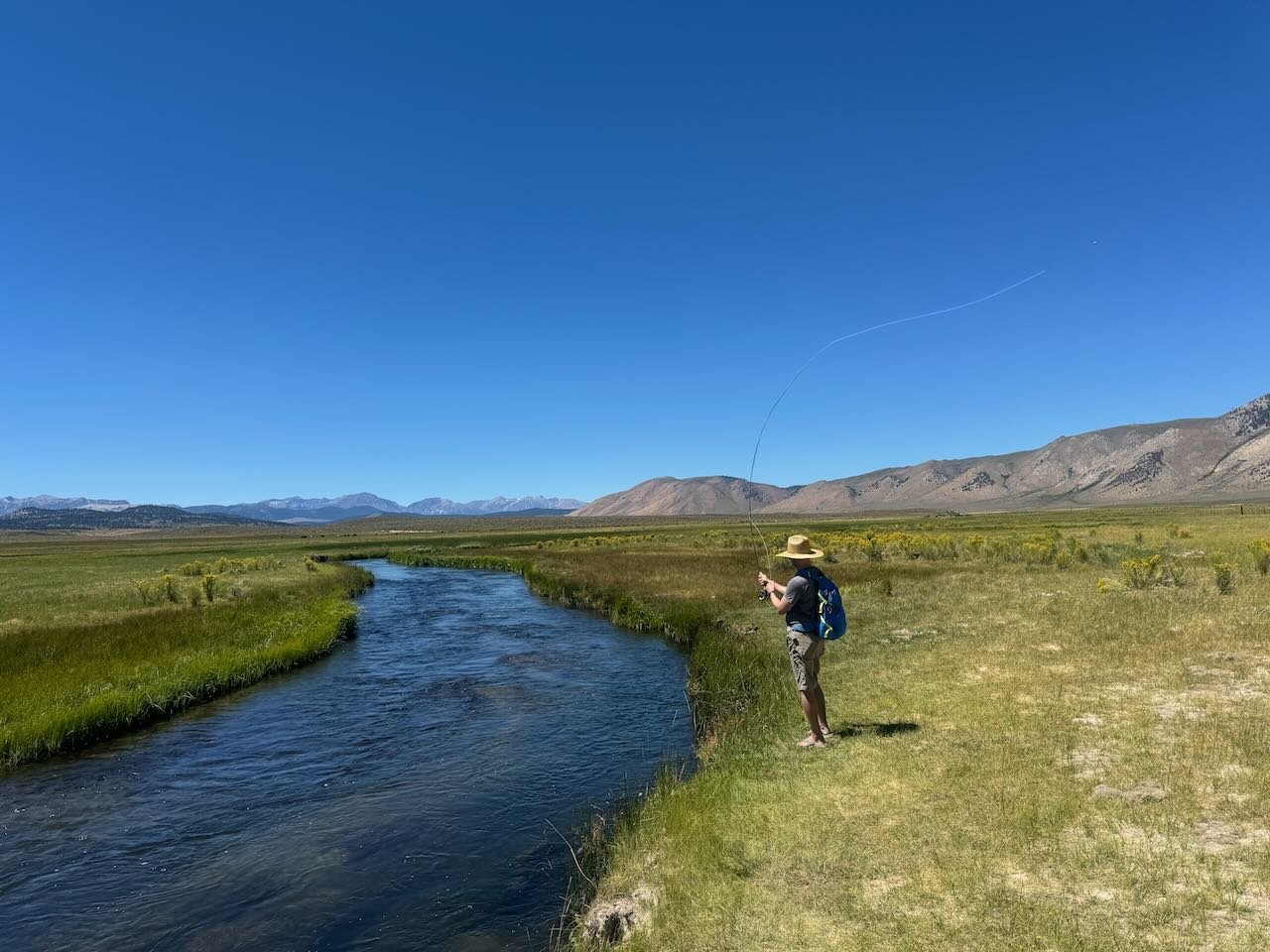Mornings are cool particularly at upper elevations. Wearing a light jacket or sweat shirt is keeping fly fishers warm until the sun gets up and warms everything up. Fly fishers need to monitor mid-day water temperatures as some waters are heating up to 70 degrees or hotter. Hoppers are bringing trout to the surface on the right waters. Caddis, mayflies and midges are hatching and feeding the trout. September is the second biggest emergence of aquatic insects in the Eastern Sierra.
Mornings are cooling off and before we know it the trees will be changing color and fall will be here with spawning browns and brook trout for the fly fisher to catch on dries and nymphs.
East Walker River
Miracle Mile Section:
There has been a major fish kill in the miracle mile section of the East Walker River. This fish kill was caused by the decaying vegetation in Bridgeport Reservoir using up all the oxygen available in the water column. When this deoxygenated water flushed through the dam and into the East Walker River it caused the fish die off. The high water levels in Bridgeport Reservoir and the warmer than normal summer was the perfect growing conditions for the aquatic vegetation that grows in the reservoir. While this has been an annual event it normally does not have the devasting effect that happened this year.
The Miracle Mile Section of the East Walker River suffered a major fish die off due to the oxygen being removed from the water entering the river from Bridgeport Reservoir from a plant die off.
Hot Creek
Interpretive Site:
Early morning hatches of tricos, bluewing olives and gray caddis are bring the trout to the surface to feed. This hatch has been short lived and is over by 9:30 or 10:00 each morning. Size 22 trico spinners, size 22 female trico parachutes, size 20 blue wing olive parachutes and size 20 gray parachute caddis are the flies that are imitating the hatching insects the trout are feeding on the surface. Using a dry and dry rig is a great way to tell when a trout has taken your small dry fly offering. Use a larger dry fly as an indicator. Use size 16 Adams parachutes, size 12 tan parachute hoppers and size 12 tan stimulators. I attach a three foot leader of monofilament to the bend of the dry fly with a clinch knot. Any movement in the indicator fly or any rise within three feet of the indicator fly set the hook. This is a great rig to allow fly fishers to catch trout on tiny dry flies.
A rare afternoon on Hot Creek with no fly fishers in site..
Hot Creek
Canyon Section:
This time of the year the weed beds make it tough to get a good drag free drift. Dry flies are much easier to keep out of the weeds. Middle of the day fish dry flies next to the banks where trout are waiting for a mayfly or caddisfly to fall off the streamside vegetation. Fishing a dry fly right next to bank will produce trout. Fly fishers can drift nymphs in the deeper weed free holes. A dry and dropper works well in the canyon section. For the dry fly fish with a size 12 or 14 parachute hopper, size 16 Adams parachute, size 12 tan stimulator and a size12 or 14 tan mini Chernobyl. For the nymphs use a size 18 bead head flash back pheasant tail nymph, size 16 hot spot pheasant tail nymph, size 18 SOS nymph, size 18 olive quilldigon, tiger midge, zebra midge and a size 18 gray La Fontaine’s caddis emerger.
A typical Crowley Lake cutthroat that was caught with a tiger midge under an indicator.
Crowley Lake
Mouth of McGee:
Be aware of surface water temperatures and quit fly fishing when they reach or surpass 70 degrees. The trout are seeking out cooler water temperatures. Mouth of Hilton Creek, Mouth McGee and Mouth of the Owens River are areas where cooler water is coming into the lake. Also look for the springs that are under the water in the Owens River arm of the lake. Midging with tiger midges, zebra midges, blood midges, gray midges and albino Barron’s are producing trout in 10 to 15 feet of water. The perch fry have hatched and the trout are taking advantage of the abundance of young of the year perch in and around the weed beds. Fish with size 10 balanced perch fry, size 12 white bodied olive matuka’s and size 12 olive wooly buggers
Nice to see students loading the fly rod and letting the tool do the work for you.
Upper Owens River
Above Benton Crossing Bridge:
This area continues to be producing trout and crowds of fly fishers. The fish are now spooky and fly fishers need to make clean casts that do not spook trout. No smacking the water with indicators or flies and walking up to the water slowly. There are hatches of mayflies and caddis flies early morning and early afternoon. For dry flies fish with size 16 elk hair caddis, size 16 Adams parachutes and size 18 blue wing olive parachutes. For nymphs fish with size 16 SOS nymphs, size 18 bead head flash back pheasant tail nymphs, size 16 bead head flash back gold ribbed hare’s ears, size 16 hot spot pheasant tail nymphs and size 18 olive quilldigons. Streamers are producing trout when fished quartered up stream, dead drifted on the substrate and stripped upstream. Black is the predominate color for size 6 or 10 wooly buggers, matuka’s and marabou muddlers. In the windy afternoons when the stream temperature is under 70 degrees try fishing with a size 12 or 14 tan parachute hopper or tan stimulator.
A double on the Tenkara Tanuki pocket ninja fishing with a Euro green/gold prince nymph and a Euro hot spot pheasant tail nymph.
Bishop Creek Canal
Behind Bishop Veterinary Hospital:
Day time temperatures are in the low to mid 90’s which is still hot, but not unbearable like the low 100’s we have had for weeks. This is a water that fly fisher should be monitoring for temperatures over 70 degrees in the afternoon. Euro nymphing with stoner nymphs, hot spot pheasant tail nymphs, olive quilldigons, green/gold wire Prince nymphs and gold ribbed hare’s ears is producing rainbows and browns to 14 inches. Fishing a hopper and dropper in the afternoon winds is a fun way to spend a couple of hours fooling the trout that inhabit the canal.






